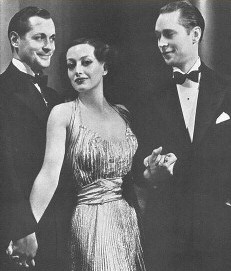This is an interesting entry for me. Regrettably, probably boring for you, dear reader. Let me apologize in advance.

I came home this evening and settled down to relax for a while. I flipped on the TV and my Tivo was recording Brigadoon (or trying to, it's having problems communicating with the digital cable box). In it, two hunters stumble on a quaint Scottish village seemingly undisturbed by modernity.
About 40 minutes into the movie we come to this scene:
Gene Kelly (reading from a large book, apparently the family bible of the lass he's smitten with):
"listen to this! Married - Elizabeth Lange to Andrew Campbell July 2nd, 1719"
He goes on to read that the birth date of his new girlfriend is October 10th, 1732 (a libra!). This was odd for Gene Kelly, but, since I've seen this movie once or twice before, this didn't get me wondering what was up in Brigadoon, it got me thinking about my genealogy project.
For the past month I've been looking up family genealogy online and bothering my relatives and Kimberly's with questions about their parents, grandparents, and great-grandparents.
So, as Gene Kelly and his buddy went racing around the countryside tap-dancing with men in argyle tights and shirts with gigantic balloon sleeves, I went and found a little pamphlet that I received in the mail from my grandmother earlier this week.
The pamphlet was printed in 1901, updated in 1907 (my neighbor didn't think that was possible because it has staples but who knew staples had been invented in the 17th century? God bless Wikipedia). It contains information relating to the genealogy of the Cunningham Family, my maternal grandmother's family.
As Gene Kelly comtemplated life without his beloved Fiona and his buddy got drunker and drunker off a flask of what is presumably some vintage 1764 scotch, I settled down to try to decipher the tiny lines of print full of dates and abbreviations in that hundred-year-old pamphlet that read, in part "Edward, b. 1823; d. 1889; one of the most eminent of the American merchants in China; m. 1858, Fanny Helen, dau. of George B. Cary of Boston" - that, without a doubt, is my great-great-great grandfather and great-great-great grandmother - Ned and Fanny!
Now this little book just goes back from there - so as Gene Kelly, torn between the bucolic life in the Scotch highlands and the life he knows in New York City, decides to make his sacrifice for his wee lass Fiona (played by Cyd Charisse) I started to plot my family tree backwards...to John Adams Cunningham, Andrew C, James C, William C - back to the original Andrew who, it turns out, is Scottish. Back to kilts and Brigadoon!
In fact, evidence suggests that Andrew must have been born in Scotland sometime around 1654, well before Brigadoon was enchanted by the prayers of a lunatic priest to only appear (spoiler alert) once every hundred years.
What does this mean? It means:
a. I am not descended from Gene Kelly
b. Cyd Charisse could be some kind of distant relative
c. I can wear a "kiss me, I'm Scottish" shirt now, if I want to.
d. all of the above.
Now if only my ancestors had handed down Cyd Charisse's dresses to me...that would be really awesome!

Four stars. Will watch again right now.
Correct answer is D.












